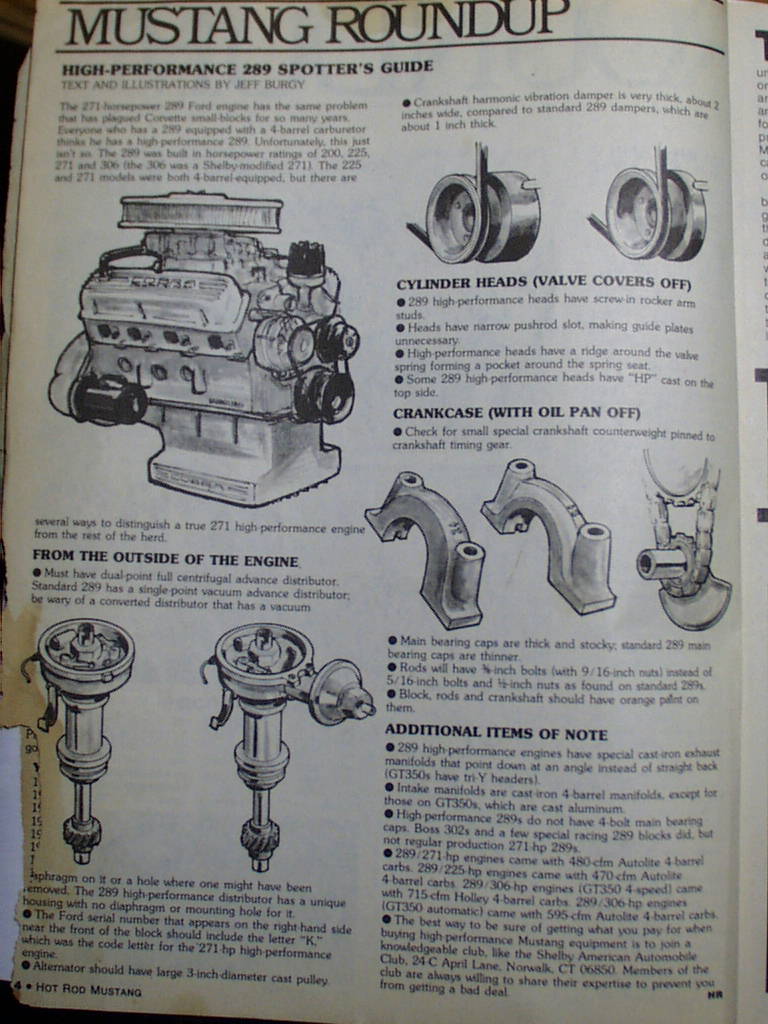The K code hipo used a Ford 4100 carb and not a Holley.
True- And an excellent replica of this carb, the best 4V carb ever made, is available from Pony Carb. I'll warn you, though, excellence comes at a price.
The heads will always be your limiting factoring. You really do not want hipo heads. They had the same size valves as the 289-2V.
The biggest limitation was not the size of the valves, it was the poorly formed exhaust ports, which were identical to, and just as lousy as, the 2V. Fixing these ports is easy, and produces amazing results.
factory dual point ? you could probably modify a single point or use a boss 302 dist.
The BOSS 302 distributor is far more rare than the C5OF-E 289 HP unit, since they were sold by the thousands over the counter as an upgrade into the 80's. The later "Motorcraft" version, no good to restorers, sells reasonably on eBay, yet only the tradmark is different.
The hipo dampner is common and cheap, the exhaust is common, a similar Autolite shouldn't be too hard to make/find, rods can be upgraded by a machine shop, so can the heads, use Mexican 302 main caps, and a regular distributor (simpler).
The damper is available new, as is the hatchet weight for behind the lower timing gear (and special thin timing gear), the thick main caps are available new, too.
The
exact repro cam, a legend in it's time, is also available new. Contact Glazier Nolan if you want to make it easy.
The 289 Hi-Po heads used threaded rocker arm studs with true guide plates for the push rods. Yes, there were oval push rod holes, but they were in the non-hipo heads too.
No, the 289HP used the same slotted, not oval, guide holes as the 2V. No guide plate was fitted.
The threaded studs and guide plates can be retrofitted to non-hipo heads with a little machining. The main difference that can't be replicated are the cast in spring pockets for the valve springs.
True, fitting threaded studs it Head Machining 101, you could almost do it yourself. The cast pockets can be simulated with spring cups.
So far, no one has mentioned the special springs with harmonic inner coils, or special retainers.
The water pump was a special high rpm deal with curved vanes, not really needed for you, and special high volume fuel pump, also not needed, and a special high volume lightweight fan, available new.
The HP also had chrome dipstick, chrome valve covers, and chrome air cleaner. An extremely versatile engine, and after fixing the exhaust port problem, powerful package, well worth replicating.











